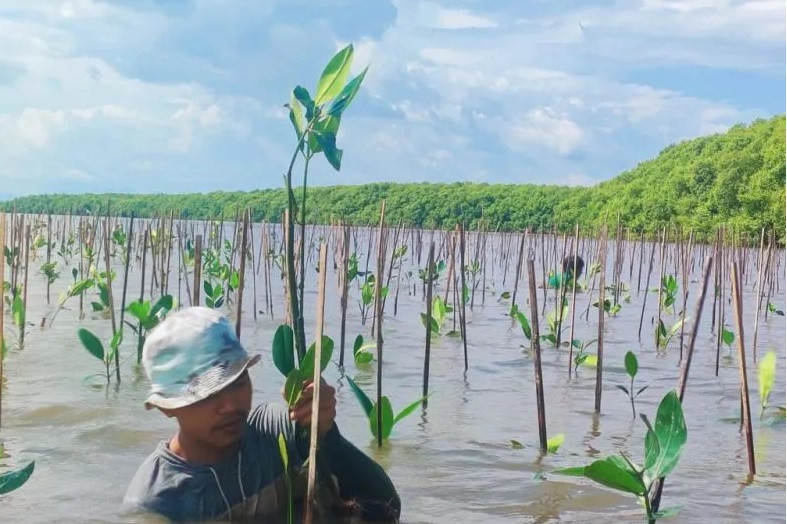https://westpapuanow.com/2022/11/

West Papua has one of the largest areas of mangrove forest in Indonesia, making up 482,029 hectares of the overall area of mangrove forests in Indonesia which total 3.49 million hectares. The area of mangroves is the largest in the world, exceeding Brazil (1.3 million ha), Nigeria (1.1 million ha) and Australia (0.97 ha).
Mangrove forests act as lungs of the world, with the most essential functions for human survival, namely as a producer of oxygen (O2) and absorbing carbon dioxide (CO2) gas as well as preventing abrasion. They are also habitats for various marine species as well as a source of food for them. Several types of mangroves that grow in Indonesia are Avicennia, Bruguiera, Ceriops, Rhizopora and Sonneratia.
In addition to the aforementioned roles, mangroves have a variety of uses. In Papua, communities often use timber from the mangroves for construction of homes and other structures. It also has industrial uses, to be processed as chips that are exported to European countries as fuel for heating. The communites in the Southern coasts of West Papua also utilize mangrove forest ecosystems to supply their everyday needs for fish and shellfish.
Mangrove forests in Papua, like others all over the country are facing various threats. Indonesia is the world’s fourth-most populous country, and as its population has grown, pressure on mangroves has increased. According to experts estimates, 19,000 hectares of mangrove forests have disappeared all over the country, to make room for aquaculture and even oil palm plantations. Illegal logging and over-exploitation, as well as various forms of pollution have also worsened the situation. As of 2015, an estimated 40% of the country’s mangroves had been degraded or lost.
The West Papua Government is currently preparing a Special Regional Regulation for the protection of mangrove forests in the region. The regulation will hopefully help transform West Papua into a conservation province that cultivates and develops mangrove forest areas more sustainably. One of the main points of the regulation is the establishment of research centre to innovate the cultivation and utilization of mangroves and other essential ecosystems, as well as protection of mangrove forests from uncontrolled logging. This step is line with the overall strategy of the Indonesian government. Indonesia is currently drafting a new mangrove policy, focused on balancing mangrove protection, sustainable use and restoration.
The plan will complement other steps that have been taken over the years to conserve mangroves in West Papua. One of the major steps involve the planting of new mangroves by the Ministry of Forestry and Environment, the army, as well as local communities.
Mangrove conservation has been intensified all over the country due to the recognition of its very important role in coastal environments and the aforementioned threats. The steps include spatial plans, a system for resolving land use conflicts and balancing environmental and economic considerations by delineating zones for specific uses. In addition, the government will expand Marine Protected Areas to over 23 million hectares. The government has also included labour-intensive mangroves restoration as part of the country’s National Recovery Program. The Coordinating Ministry for Maritime Affairs and Investment (CMMAI) is mandated to coordinate the related ministries and agencies, including Ministry of Marine Affairs and Fisheries, Ministry of Environment and Forestry, and the Mangrove and Peatland Restoration Agency to support mangroves rehabilitation across provinces in Indonesia.

The government has set the ambitious goal of restoring almost all of what’s been lost, rehabilitating 600,000 hectares of mangroves by 2024.
Indonesia has placed a special focus of mangrove rehabilitation and conservation to mitigate climate change as it holds the Presidency of the G20 this year. It has recognized that mangroves can contribute 60 percent of net-zero emission targets, as stipulated by the Paris Agreement.
